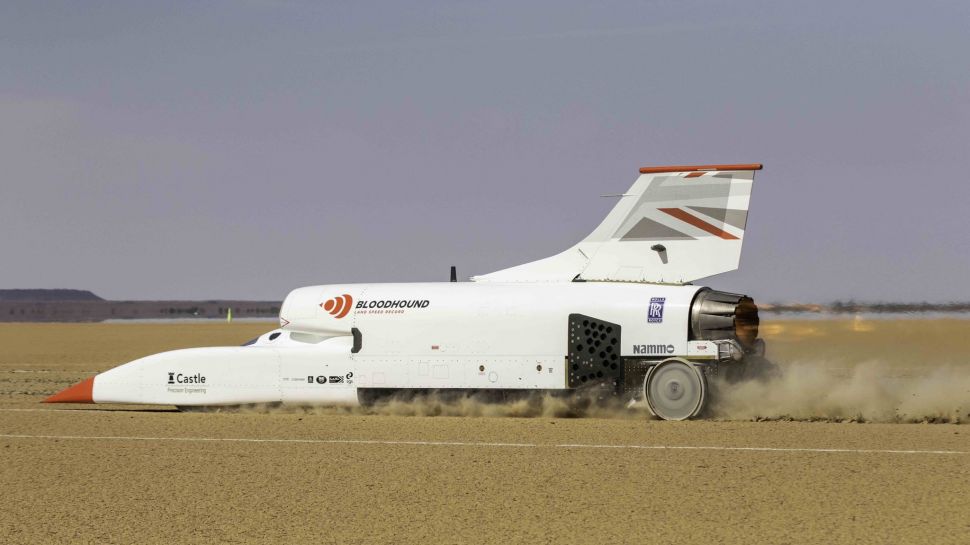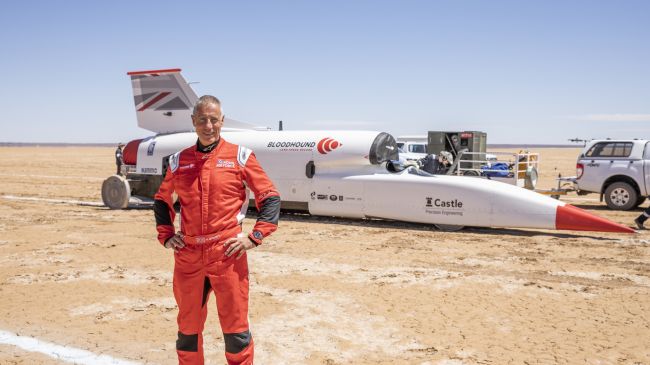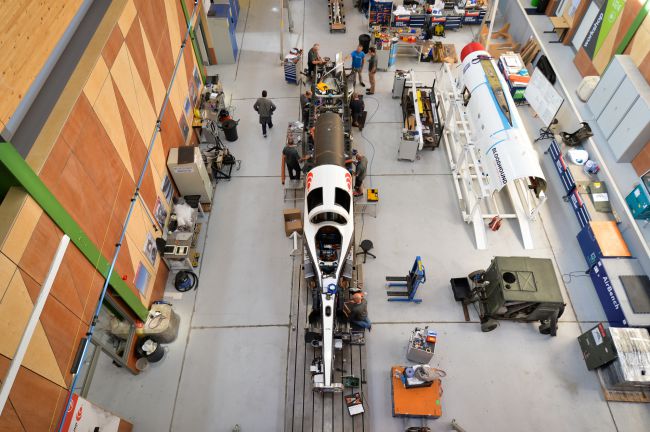This Jet-Powered Car Can Surpass The Speed Of Sound And Break The Land Record
Aadhya Khatri - Nov 14, 2019

The car is designed to run at 1,609 km/h, faster than the current record holder Thrust SSC as well as the speed of sound, which stands at 1,225 km/h
A car designed to run at supersonic speed has just achieved a new breakthrough. It has reached the speed of 806km/h in a test conducted in the Kalahari Desert.
With a shape like an arrow, a jet engine, and a braking system that uses a parachute, the Bloodhound (the car in question), is far slower than the 1,225 km/h speed of sound. But in the next 18 months, the car will attempt to come closer to that rate. In 2021, it plans to break the record of the Thrust SSC, which is 1,228 km/h.
Once that has been achieved, the Bloodhound will try to run at a maximum of 1,609 km/h, the speed it is designed for.

These attempts will test the ability of the car. Whenever something travels faster than the speed of sound, it will create the sonic boom and aerodynamic drag. The question for its creators now is how to keep the car stable at that great speed, under the impact of the shock wave and drag.
Traveling faster than the speed of sound is nothing new given that military aircraft have been able to do so long ago. On land, the Thrust SSC did that more than two decades ago.
What makes Bloodhound special is that it is designed to break the record of the Thrust SSC by running at the top speed of 1609 km/h. The arrow-shaped Bloodhound is expected to reach top speed before the shock wave and drag have time to take an effect on the car.
Supersonic jets have one advantage over their land counterparts, which is that they do not have to deal with the way shock waves interact with the ground under the car. The question here is whether the wave will reflect back up or it will damage the surface.
Bloodhound is fixed with 200 pressure sensors around its body and on each of its wheels, there are load sensors. After each test, the team will gather data from these sensors to make a virtual model on computers, predicting the possible behavior of the car at different speeds.
The Bloodhound has the same engine with the Eurofighter Typhoon aircraft, which is the Rolls-Royce EJ200 turbofan jet engine.

Before the car tries to break the record on land, it will be powered by a rocket engine so that it can go past the sound barrier. The team is also looking into the brake system of the Bloodhound as its speed gets higher, for now, the car makes use of air brake and parachute. Another challenge is how the team can ensure the safety of the driver and the car at the rates higher than the speed of sound.
To make sure that the test track has no obstacles like stones, which can be a real disaster for a car traveling faster than sound, a team of over 300 staff are at work to keep the track clean.
In the next two weeks, the team will test the car some more before the summer rain of South Africa renders the Hakskeen Pan’s track unusable because of flood for a few months.
The reason the team chooses that site is since there are annual floods, the surface will be leveled out and then the sun will bake it hard like concrete.
The Bloodhound project started in 2007 and the team planned to achieve the land speed in 2016. However, as for the short of funding, the attempt was postponed until today, after Ian Warhurst, a millionaire in car parts bought the company owning the project.
Featured Stories

Features - Jul 01, 2025
What Are The Fastest Passenger Vehicles Ever Created?

Features - Jun 25, 2025
Japan Hydrogen Breakthrough: Scientists Crack the Clean Energy Code with...

ICT News - Jun 25, 2025
AI Intimidation Tactics: CEOs Turn Flawed Technology Into Employee Fear Machine

Review - Jun 25, 2025
Windows 11 Problems: Is Microsoft's "Best" OS Actually Getting Worse?

Features - Jun 22, 2025
Telegram Founder Pavel Durov Plans to Split $14 Billion Fortune Among 106 Children

ICT News - Jun 22, 2025
Neuralink Telepathy Chip Enables Quadriplegic Rob Greiner to Control Games with...

Features - Jun 21, 2025
This Over $100 Bottle Has Nothing But Fresh Air Inside

Features - Jun 18, 2025
Best Mobile VPN Apps for Gaming 2025: Complete Guide

Features - Jun 18, 2025
A Math Formula Tells Us How Long Everything Will Live

Features - Jun 16, 2025
Comments
Sort by Newest | Popular